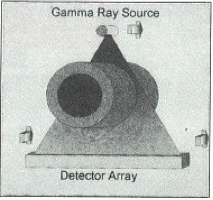High temperature sulfidation is probably the most well-known
corrosion mechanism in the oil refining industry because it
occurs in large sections of the refinery. Sulfidation corrosion
(also known as sulfidic corrosion) is a result of naturally occurring
sulfur (S) compounds found in crude oil. In the absence
of hydrogen, corrosion due to sulfur compounds in the
crude is thought to occur at temperatures above 500F (260C).
Up to that temperature, corrosion rates due to sulfidation are
relatively low, even for carbon steels, unless there is naphthenic
acid present in the crude.
Sulfidation corrosion results
in the thinning of the pressure
containment envelope,
affecting such components
as piping and pipe fittings,
heater tubes, and pressure
vessels. Most industry incidents
have occurred in
piping, due to lower nominal
wall thicknesses as compared
to other equipment
types. Sulfidation corrosion
can be localized or general
in nature for a given component,
though the majority of
cases exhibit general thinning.
When the damage is
general and thinning occurs
over a large area, ruptures
are possible and can lead to
the potential release of large
quantities of hydrocarbon
streams.
Corrosive thinning of piping
walls and equipment
due to sulfidation depends
on many factors, such as sulfur content of the oil, temperature,
flow rate, and H2 concentration, making it hard to predict accurately.
However, one predictor of higher sulfidation rates is
low silicon content in carbon steel components.
Susceptible Areas
According to the American Petroleum Institute (API) Recommended
Practice 939-C (Guidelines for Avoiding Sulfidation
Corrosion Failures in Oil Refineries), one-third of high-temperature
sulfidic corrosion failures are the result of low silicon
content in piping. Moreover, older pipe with low Si may corrode at rates 2 to 10 times faster than surrounding higher
Si piping.
Recent industry experience indicates that carbon steel components
(primarily pipe) and their respective welds with low-Si
(< 0.10 wt. %) content can corrode at an accelerated rate when
exposed to H2-free sulfidation corrosion conditions. Piping
welds, where the root passes were made with low-Si containing
filler metals, have been shown to corrode at a greater rate
than the base metal components when exposed to the same
process conditions.
Source:https://inspectioneering.com/tag/sulfidation






